
Dorset is one of the busiest sport climbing areas in the UK. The most popular routes receive hundreds of ascents each year. Pete Oxley began bolting on Portland over 25 years ago, and he had no idea how popular the area would become. There are now over 1500 sport routes in Dorset, many of which were bolted in the early 90's, and have homemade staple bolts which are fixed in soft rock. Over the last few months there have been three bolt failures whilst in use.
Marti Hallett runs the Dorset bolt fund in his spare time, (originally started by Pete Oxley in the 90's) and has been diligently replacing bolts on many of Dorset's crags. Marti estimates that each route costs an average of £100 in bolts and glue alone. He has his work cut out. We spoke to Marti about his role raising funds for the bolting, the widespread problem of aging bolts and how to recognise deteriorating bolts.
How did the Dorset bolt fund come about and how do you go about raising funds?
The Dorset bolt fund has been around for many years, Pete Oxley started it in the 90's to help him with all the bolting of new or old drilled pegged routes. There used to be a pot in the old climbing shop on Portland and a website with a Paypal link. Apart from the odd bit of staple and worn belay replacement, it sat stagnant for a while with a trickle of money each year from Rockfax.
When I started pushing things about 4 years ago I soon spent all the money on new belay chains at the Cuttings. I quickly learnt that if I need more money I had to ask, and so the power of social media took over. As many of the climbers who enjoy sports climbing in Dorset are willing to chip in to help maintain and improve their crags, they just needed to be asked, or know how and where to donate. I now try and keep everyone informed of what we are doing and how much it is costing and ask people to donate on Facebook, Instagram with links to the PayPal account. Last year I started placing collection tins around the local climbing wall, this has been really useful, even if it is a bit of a job collecting it's worth it and has paid for most of the glue use this year. Now I'm actively pushing more tins out to the other walls where Portland climbers train.
Are a lot of routes in need of rebolting? Is this a widespread problem across Dorset?
With over 1500 routes in Dorset, many bolted before 1995, there are a lot that are just worth renewing before there are failures, then add in the routes that are showing weakness with the bolts. In the last 2 months we have had 3 in-use failures of bolts, one of which was at the lower off. Luckily no one was badly hurt, but James was out of action for 6 weeks, so we are starting to chase our tail to get as many retros done as soon as possible.
You also take an active role in wider crag access issues – can you tell me a bit about that?
I'm currently the BMC access rep for Swanage and Dorset, but by default the Bolt fund has become the go to place to ask questions and put forward requests. It is easy to combine the two and find an effective way of sorting improvements to the climbing down here in Dorset. Over the last few years I have organised re-staking at Swanage, clearing of scrub at the Cuttings, been involved in the meeting for group use on the NT land and just this week started to make access improvements to the paths under the cliffs on Portland. As well as getting more people involved in helping with the bolting, with workshops and mass bolting days.

Do you think a social media, grassroots campaign can be successful elsewhere?
Climbing and climbers have changed, there are many more and most have good jobs these days. The days of the dole climbers are left back in the eighties. Most climbers will happily pay £10 at least once a week to train, or just have fun at a local wall and think nothing of spending their hard earned cash on climbing. But at the weekend they will go out to a crag (maybe have a little whinge about paying to park) and not think about the bolts, the stakes, in-situ lower offs, or even the access path, which all had to be paid for at some point.
But I don't think it is that they don't feel they should pay, I think that they just haven't thought about it - "as the bolts have always been there, right!" By using every means to get the word out and remind them that it all costs, most people are happy to chip in.
Marti has prepared a detailed article on why bolts can fail and what to look for:
We all know that climbing is a risk sport; that is part of its appeal to some. For the many that want to concentrate on pushing their physical limits, sport climbing offers them a safer path. However, if you are coming from an indoor climbing background where the belays and fixed protection points are designed with engineering calculations, professionally installed, load tested and regularly checked, you may presume that once you are outside clipping the big shiny bolts that you have nothing to worry about apart from a burst ego. But bolts fail!
Equipped routes outside are not tested or checked and are very rarely installed to any approved standard. It is solely up to you to assess whether what you are clipping will save you if you fall.
There are in excess of 1500 sports routes in Dorset, many of them with bolts installed in the 1990's, so this fixed gear has been sitting there exposed to the elements in a marine environment for a while now. These are predominantly homemade staples chemically fixed into a relatively soft and porous limestone (Portland or Purbeck). When they were first installed, the locals had no idea how long they would last or how popular climbing would become on their local crags. In fairness, the credit goes to Pete Oxley as his homemade staples have outlasted many of the various improvised or commercial fix gear on the southern sea cliff crags.
Historically there have been few failures. But over the last couple of months there have been 3 total failures of the bolt while in use, and after more than 25 years in place many are starting to show degrees of weakness and need replacing before catastrophic failure occurs.
The staples made and placed by the core of locals were always made of a high quality Marine grade stainless steel 316 (A4), 8mm rod was the norm. Therefore they have not and will not rust. What you may see is tea staining which is a rusty discolouring of the surface, this is not corroding the metal. The resin used varied, always a two part epoxy or polyester.
There has never been a case of SCC (stress corrosion cracking) reported in Dorset, so I will not go into it here. (If you are interested, there is lots of information online about it).
So what are you clipping and what to watch out for?
Original staples (bolts) pre 1995
These normally look a little smaller than the newer staples (post 1995); some are too small to feed the rope through easily if a carabiner is clipped in. It is difficult to visually tell if they are at risk of failure. Recent testing of a number of these bolts have resulted in a failure at just over a 2Kn pull. Their fault is that they have no keying or kinks in the ends that are in the rock, so solely rely on the bond between the smooth metal and resin which is much weaker than the resin/rock bond. They also tend to be a little shorter with only about 40mm depth in the rock. The Bolt Fund is prioritizing the replacement of these but it's a big job.
Remember, these have been around for 25 years; if you are clipping into a small staple, be cautious; keep an eye out for any movement in or out, even if it's just 1-2 mm, or if you see a different coloured band next to the rock where it may have pulled out.
Rope wear
This is an easy one to spot and sadly self-inflicted. Predominantly on the popular belay bolts, grooves are worn into the steel by the rope running through. This will happen over time on busy routes with hundreds of people lowering off. The wear is accelerated greatly if climbers top rope directly through the bolts. Always top rope through your own carabiners and if you see someone doing this educate them about the consequence of their actions.
DBF has been busy over the last 4 years replacing the most popular and worn belays with new chain and ring sets. These cost the fund nearly £50 a time to install. Please help to make them last as long as possible by using your own gear. Of course you can lower off through them, but only if you are the last one up the route.

Rock erosion
Also easy to spot (but also confused with the next failure). Limestone is a sedimentary rock and in Dorset it is laid down in bands of varying quality. Some of the layers are softer and sandier; over time, this rock erodes away from the resin used to fix the bolts in place. This resin is considerably stronger than the rock. This will leave a noticeable plug of protruding resin. Now, bear in mind that the average staples' depth in the rock is 50mm and as these rock bands are relatively softer, I would seriously consider how secure a bolt could be if found like this.
This is the big one and so far seems to be more prevalent in Dorset than anywhere else. What makes chemical bolting stronger and longer lasting is that the glue acts upon the entire internal surface area of the hole. For some reason, there are numerous examples in Dorset of this bond failing. It might be due to poor installation, inadequate cleaning, dampness or the wrong type of resin when glued. But this seems unlikely in all cases as there are so many appearing now. I have a theory that it may have something to do with the porousness of the rock, with the moisture hitting the non-porous resin and eroding the rock at the bond. But DBF is more interested in finding any failed bolts and replacing them before total failures occur.
Again, look for the bolt pulling slightly away from the rock, but this time with a plug of resin too. (looking similar as with rock erosion plug). You will most likely be able to tap it back in and pull it out (only a millimetre or so) with a sharp pull on the quickdraw. If the bond has failed, do not panic, unless you can remove the bolt completely by hand it should hold your body weight just fine, but I would not rely on it to hold a fall.
Mechanical bolts
'Expansion bolts have no place on a British sea cliff in my opinion.'
– Dan Middleton, BMC Technical Officer
Around Dorset, a small percentage of routes have Through bolts or Petzl long life hammer fixed bolts. They are common in other areas due to the ease of installing them. However, they are vastly inferior to chemical bolts in strength and longevity. They also require a hard type of rock to be trustworthy (read articles on sandstone bolting in Australia). For this reason they are not suitable for use in the cliff around Dorset; there have already been multiple in use failures of these bolts in Dorset.
On wave affected sea cliffs the hangers will literally be washed off. So have a good look up the route be fore you start as it wont always be the first that is missing.
In the meantime, you may find that these bolts are corroded as they are normally of a lesser grade stainless steel or you may find that the hangers are loose; this may indicate a greater chance of failure. You can simply tighten these with a spanner if it has a through bolt or hammer it tight if it's a Petzl long life. Missing hangers can be replaced but if one comes off once it will more than likely happen again.
Do not confuse glued in threaded bars or stud anchors with Through bolts - they look very similar, the only give away can be the roughly cut end and signs of resin behind the hanger. These are more reliable however are more often a lesser grade stainless steel and prone to hidden corrosion problems.
Badly positioned bolts
No one is perfect - even the most experienced of bolters can get it wrong sometimes. Bolts can be out of reach from the clipping hold or so badly spaced that a slip when clipping could end up as a ground fall. (An indoor wall will as standard have the clips 1m apart.) Your own ability and experience help you deal with this.
More importantly, incorrect bolt positioning may result in a bolt being placed in such a way that the carabiner will be loaded across its minor axis and could result in it breaking. This can happen when a bolt is too close to an edge or change of surface angle.
If you are on a route with such a bolt it may be worth using a short sling threaded through to replace the carabiner.
At DBF we are committed to replacing as many of these bad bolts. But we need you help in finding them. If you come across a bad bolts (take a picture of it if you can) report it to us via E mail of Facebook page. You can get all the details at www.dorsetboltfund.co.uk
The new replacement bolts
The new bolt of choice by DBF is an 8mm twisted P bolt 100 mm depth (sometimes 150mm if the rock is softer). Only A4 (316) grade stainless is used. These are professionally manufactured and tested to comply with EN959 and UIAA123 Standards. A high quality epoxy acrylate resin is used for installation. There are a few reasons why we use this resin, but one of its properties is its fast cure time; at normal temperatures it sets to its full strength in 60mins. This means we can leave the area after gluing without the need to tag anchors out of use.
In tests, these bolts will hold a 35KN load if correctly installed. But remember a bolt is only as strong as the rock it is placed in. It would be impractical to load test every bolt placed and therefore are not. So a bolt may have originally passed it want appears good solid rock, but the geology of the Dorset cliff is of a blocky nature. Over time, they can weaken or detach.
Climbing is never without risk and sports climbing is no exception. We at the Dorset Bolt Fund are working hard on making sports climbing around the south coast as safe as we can, but we cannot guarantee every bolt is 100% safe.
Ultimately it is up to you to make the final decision to trust any fixed gear, you're not in the climbing wall now!
Please help support us with this mammoth job, we need your help not just with finding bad bolts, but also with funds.
It all cost a lot of money to retro a route with high quality fix gear,(in excess of £100) we are all volunteers and all the money raised goes to buying bolt, glue and the equipment need to do the work. Please donate what you think is fair to keep the sports climbing on the south coast the best it can be.
You can donate to the Dorset Bolt Fund on their website and follow them on the Facebook Page
After The Send has been documenting the DBF's efforts - check out the site here



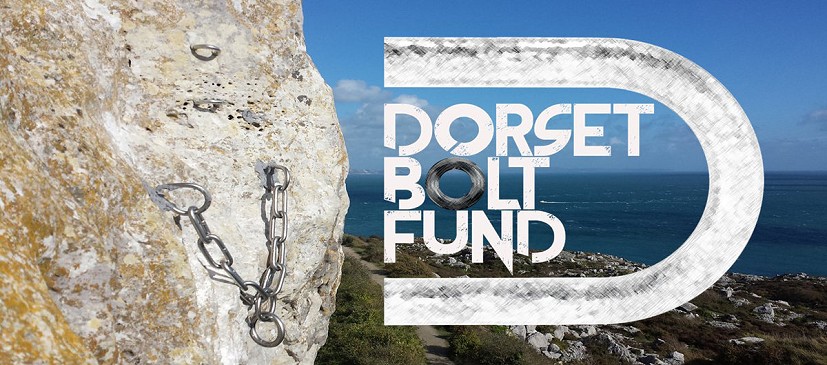
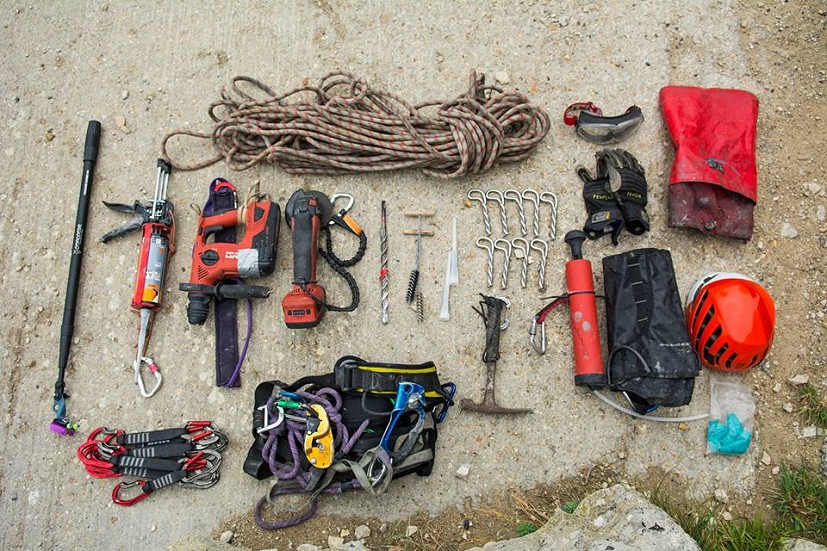
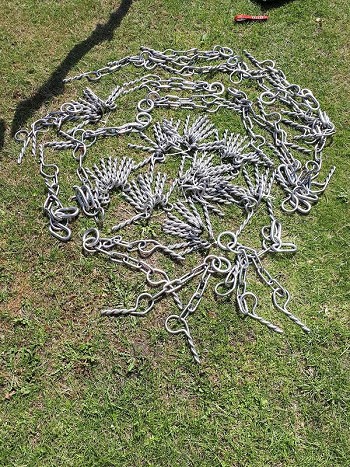

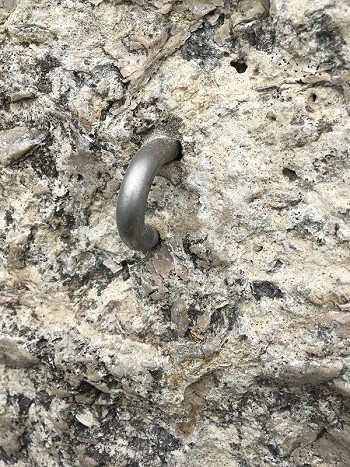
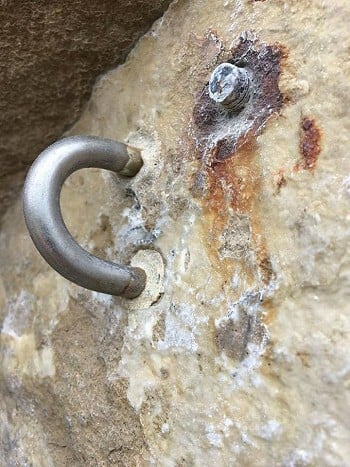
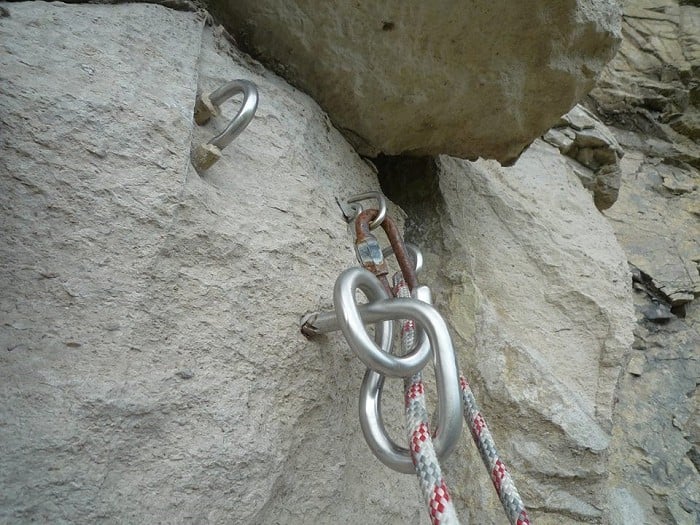
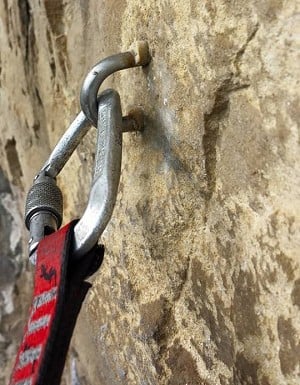
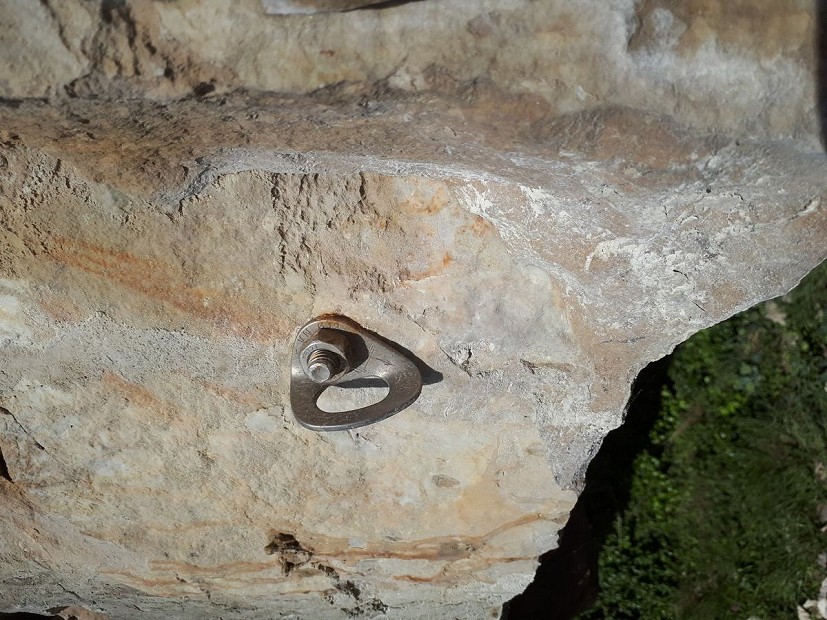

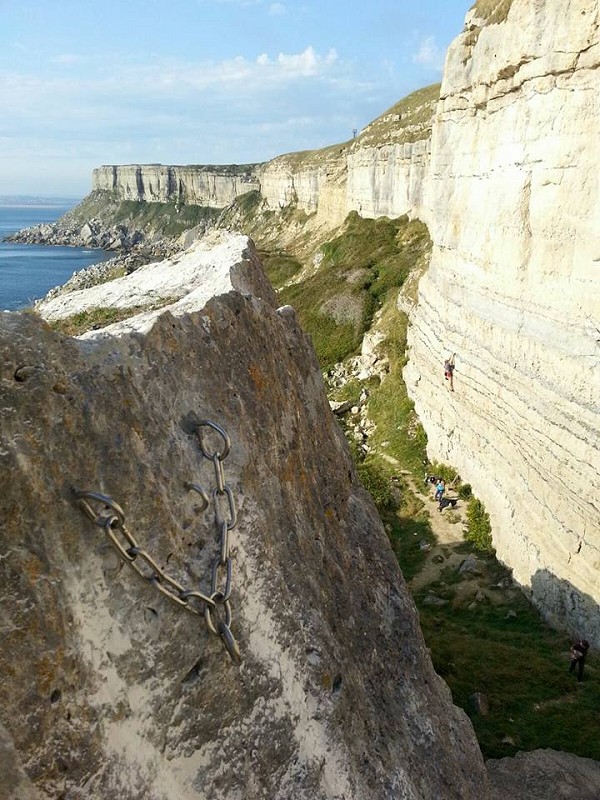
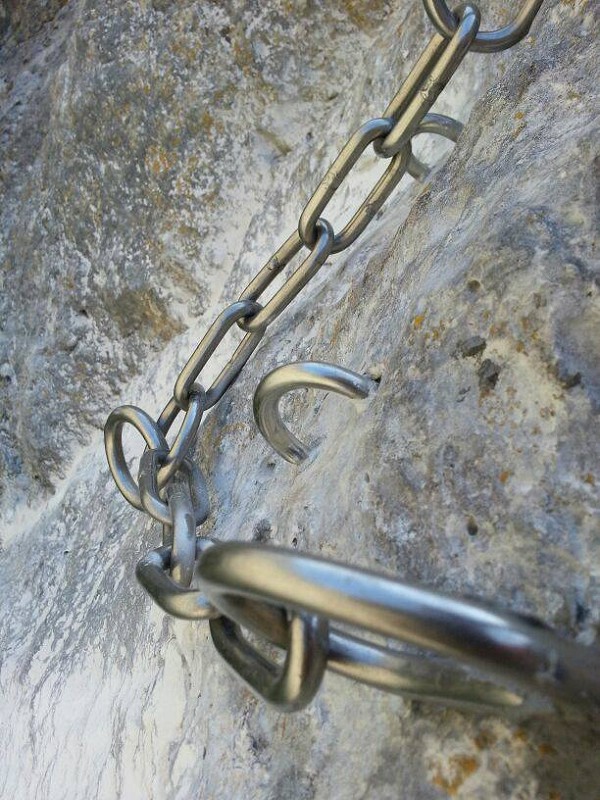







Comments